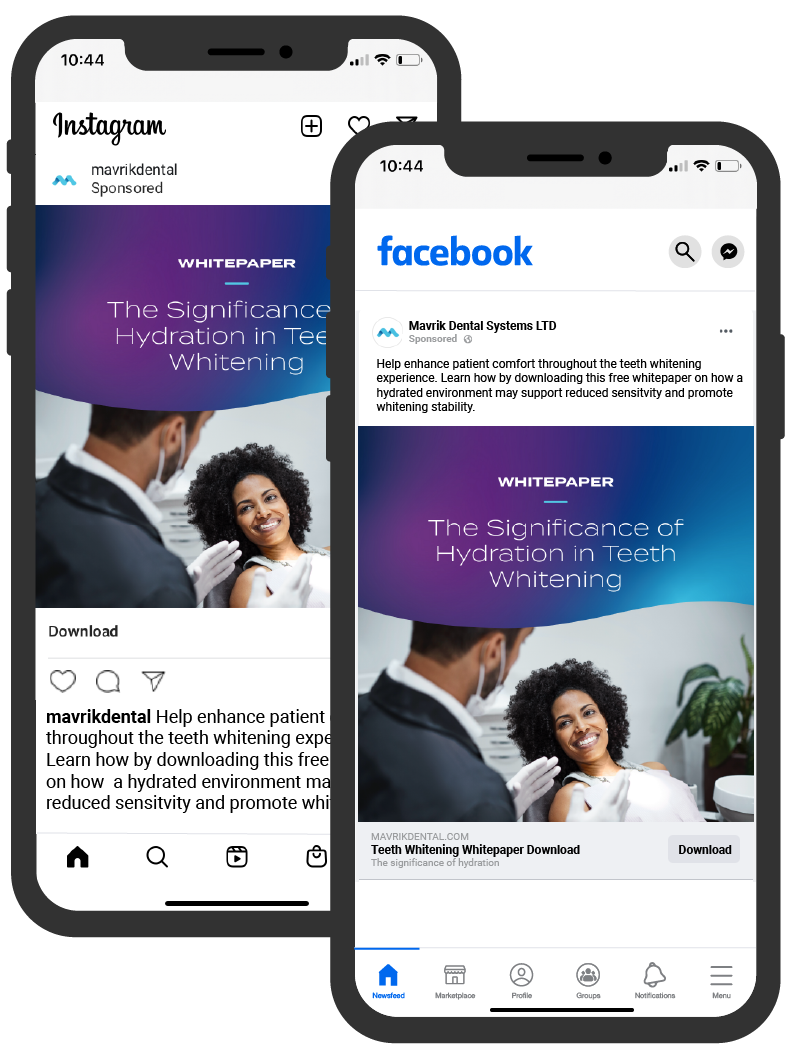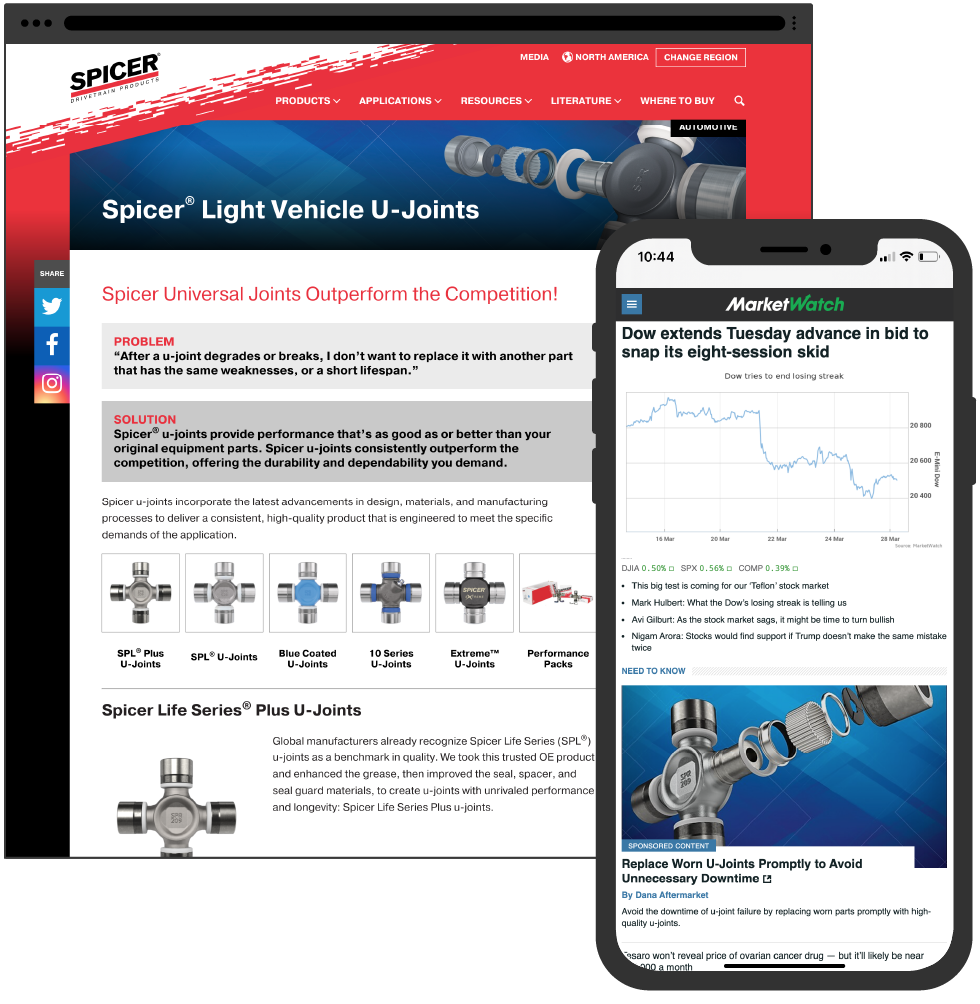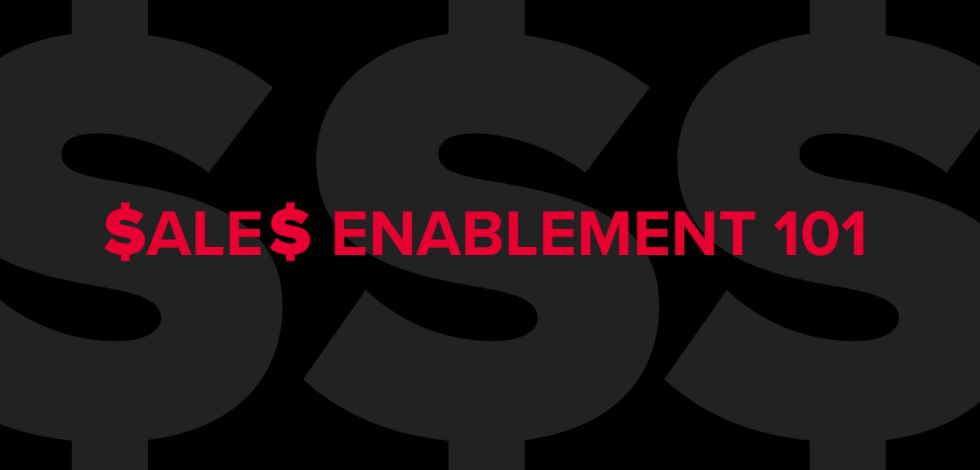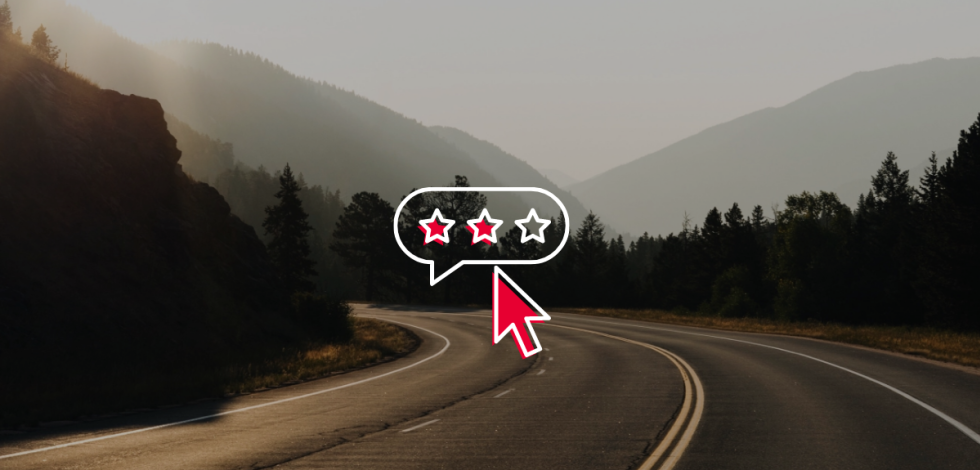79 percent of people say they’d prefer to see ads blended into page content instead of intrusive banners. This type of ad content, known as native advertising, is an invaluable way to increase your brand awareness and appeal to new audiences.
Do you know how to best utilize this advertising format for your brand, though? Read on to discover how to effectively incorporate native ads into your marketing mix.
![]()
What is Native Advertising?
Have you ever seen an ad on Facebook that looks just like an organic post? That’s native advertising. Native advertising involves running paid ads that match the correlating organic content on the platform they appear on.
The native advertising market is expected to be worth
$400 billion by 2025.
– ADYOULIKE
Why is this effective in attracting engagement? A native ad offers unique benefits that other paid media options may not.
Blends with Organic Content
Native advertising doesn’t overwhelm consumers or distract from the organic content but often complements it instead. In fact, native ad recommendations are 27 percent more trusted than regular social ads. If used properly, native ads can be a huge differentiator for your business’ overall ad efforts. That’s because native ads appear in relevant places and on relevant websites marketing similar products your target audience may be looking for all while blending in with organic content.
Banner and pop-up ads can be intrusive, but native ads excel at promoting your brand in the best possible place to the right audience. By integrating informative ads within organic content, users can learn about your business at their own pace—and you’re able to offer valuable solutions in places your ideal audience is already searching. Plus, native ads offer the ability to get around ad blockers, which are used by 42.7 percent of all internet users.
Combats Ad Fatigue
When your audience sees too many ads or the same ad too often, they will begin to consciously or unconsciously ignore them. People are flooded with advertisements every day, and it’s inevitable that over time your ad may become less effective.
Native ads match the look, feel and function of other content they’re placed with and don’t remove viewers from their experiences. Because native ads fit so well with organic content, people may see them as less disruptive, treating them just like other content on the page.
Native ads also have the advantage of being shareable on social channels, something that display ads are unable to do, allowing users to extend the reach of your content. By serving audiences targeted, relevant ads at the moments they would most benefit from them, you’re showing that you can meet their needs. You want to build a partnership with your ideal audience by offering information that is helpful—don’t make your ad a sales pitch.
Instills Trust in Your Brand
Branded ad content drives consumer intention and interest, and users are constantly consuming digital content with readily available technology. Millennials grew up with the internet and know when they’re being marketed to, which is why they prefer a seamless blending of ad and organic content.
Similarly, Gen Z was born into a fully digital world, meaning they are active on multiple platforms where reaching them with native ads may be beneficial. In fact, compared to older generations, Gen Zers are the most likely to be influenced by online ads; nearly one in four Gen Zers in the U.S. claim online advertising has become more influential in purchasing decisions over the last two years.
The point of native advertising is to help brands showcase their content in a way that isn’t frustrating or out of context; native ads can be seen as helpful if they match what users are looking for. Your brand should offer solutions to your ideal audience as if you were partners in business.
The click-through rate of native ads is
40 times more than classic display ads.
– IGNITE VISIBILITY
It’s clear to see why native advertising is a popular way to reach your target audience, but you need to approach this ad type properly in order to see success.
Choosing the Right Ad Platform
As the popularity of native ads continues to rise, learning how to best implement them has become imperative. You must take into account which ad format will work for your content and which platform will provide the strongest results.
There are three platforms you can choose to run your native ads on:
- Social media
- Open web
- Search pages
Each platform has as its own unique display options that can be leveraged to increase your brand awareness. The Interactive Advertising Bureau (IAB) classifies six types of native ads:
- In-feed units
- Paid search ads
- Recommendation widgets
- Promoted listing
- Native display ads
- Custom ads
In the next section, we’ll dive further into each platform and which native ad types work on that platform.
Social Media
Creating native ads for platforms like social media, also known as in-feed units, is a straightforward and manageable way to promote your brand. Examples of in-feed units you may see on social channels include:
- Promoted Tweets on Twitter
- Sponsored Stories on Snapchat
- In-stream ads on YouTube
- Sponsored posts on Facebook
- Sponsored updates on LinkedIn
Compared to organic content, though, in-feed native ads are specifically marked as sponsored content, per guidelines stated by the IAB.
To help Mavrik Dental Systems® improve lead generation and its overall brand awareness for its teeth whitening technology, we implemented a Facebook and Instagram ad strategy to reach new prospects. We drafted copy promoting a helpful downloadable whitepaper and paired this with an eye-catching visual on the significance of hydration in teeth whitening. This ad was designed to appeal to Mavrik’s ideal audience: dental professionals.
These ads ultimately gained
126,893 impressions and 640 link clicks.

With any type of brand promotion on social media, it’s important to ensure your ads are the best representation of your business and that you’re promoting informative and engaging content honestly to consumers. Information on social media can spread quickly, so your content needs to be of the highest quality with no spelling errors or potentially controversial messaging.
Social media platforms are also heavily saturated with content every day, so ensuring your ad is visually engaging is a key to helping it stand out. We’ll dive into making your ads visually appealing more later on in this article. Hashtags, as applicable, are also an effective way to help your content stand out and reach the right audience. Creating a hashtag around a campaign and implementing it into all ad formats, including native ads, can help build a community of ideal viewers who can then use that hashtag in their own posts, improving awareness and expanding the reach of your brand.
With social media, you want to constantly monitor your ads, address any questions and ensure that overall you’re reaching the right audience. Users expect answers from businesses in real time. In fact, 40 percent of consumers expect a response within the first hour, and 79 percent expect a response within the first 24 hours. Make sure you’re capable of keeping up to speed with the ongoing communication that occurs on social networks. If your company doesn’t feel confident it can keep up with online customer support, though, it might be worth evaluating if these tactics make sense for you. Customer support is crucial for success and long-term brand loyalty.
Search Pages
Platforms like Google allow for the placement of paid search ads above organic results on the search engine results page. These ads match the organic results but prioritize your webpage, giving your brand higher search recognition. This form of native ad is also utilized on websites with existing editorial content like published blogs or news outlets.
Dana Aftermarket set a goal to drive qualified prospects to its U-Joint product page as part of its native display ad campaign. We helped Dana Aftermarket achieve this goal through strategic native advertising placements on over 800 websites. By running native display advertisements on contextually relevant websites, Dana Aftermarket was able to deliver thoughtful content to an ideal audience at a time in which they would be more likely to click on the advertisement.
This native display advertising campaign resulted in
789,255 impressions and 3,061 clicks.

Open Web
This native ad format involves using a web-based platform that allows advertisers to purchase ad space from vendors or directly through demand-side platforms (DSP) and promote ads that blend with native content on website pages.
Types of native ads that can appear on this platform include:
- Recommendation Widgets: These native ads appear as sidebars or at the bottom of a website or article. They are often titled “Recommended for You” or “You May Also Like…” and include content that coincides with the website or article they appear on.
- Promoted Listings: When visiting an e-commerce website, such as Amazon, you may notice promoted items along with product results; however, promoted content still matches the organic results that appear. Promoted listings differ from paid search ads because they are found on websites that don’t promote editorial content.
- Native Display Ads: Display ads are placed on websites with contextual relevancy. A website that hosts user-generated content, such as a recipe or blogging website, may also have display ads of a brand’s content alongside organic content.
The IAB then has a sixth type that doesn’t fit into any of the above categories. These are known as custom ads, and they are very specific to the functionality of the platform they appear on, like Spotify- or Pandora-branded radio ads. Another example of a custom ad is purchased Snapchat filters that promote a brand while still fitting in with the regular filters that come with the application.
![]()
Best Practices for Native Advertising
Your native ads will only be successful if you fully understand your audience. We’ve laid out some best practices to keep in mind when implementing this ad format into your marketing mix.
Understand Your Target Audience
Do you know who you’re trying to reach with your native ads? Which platforms are they on and what problems are they trying to solve? To understand your target audience, you should research:
- Demographics: Determine your target audience’s age, gender, location, occupation and education.
- Interests: What things are your target audiences already discussing or purchasing? Pay attention to the products, services, activities or topics your target audience often discusses or enjoys.
- Behaviors: Research how your target audience is acting online. This can include which websites and social platforms your ideal audience is frequenting, which kinds of content they search for and what times and days they are most active.
Avoid a Sales Pitch
A native ad that focuses solely on selling a product or service isn’t going to appeal to your target audience. You want to create a valuable experience, and that means offering helpful content that informs, engages or entertains viewers. Think about what they need and how you can be a partner by delivering a helping hand when appropriate.
Valuable promotional content includes insightful articles, visually appealing infographics, helpful advice, tips and tricks or storytelling. Ensure your native ads focus on how you can help your customers instead of solely trying to sell to them.
Make Your Visuals Stand Out
Though native ads should be designed to fit the format and function of the platforms they’re posted on, you’ll still want viewers to notice and engage with them. While format may depend on which platform you choose, overall your ads should include eye-catching text, color schemes and imagery. Ensure your text is concise and large enough for viewers to read it.
Another method is to appeal to viewers using these four basic emotions to elicit an action:
- Happiness
- Sadness
- Surprise
- Anger
By factoring emotions into your ads, you’re more likely to garner attention from your target audience. Ads depicting happiness make us feel good, ads depicting sadness make us empathize and ads depicting surprise or anger make us embrace what we’re comfortable with or aspire for change. Much like meeting someone new, you want to make an impactful first impression with your ad—and appealing to emotions can encourage this.
Consider Location
You can use geotargeting to get your native ads in front of customers in a specific location, which can be extremely helpful when looking to drive traffic to a specific area, like a store or restaurant. Promoting locally helps enhance reach to the best possible audience in a specific region. Platforms like Facebook and Google are key in showcasing your native ads in your selected region, helping your brand become locally relevant to a target group of people. You can also implement geotargeting on open web platforms, as well through a DSP, serving your native ad to a location-specific audience.
Another benefit of geotargeting is that you can opt to only show your ads in areas where your competitors may not see them by isolating certain IP addresses. You’ll have a leg up on the competition by being the top solution and garnering engagement with your target audience in a certain location.
![]()
Analyzing Your Native Ad Efforts
You’ve created your native ad, and you’ve chosen your ideal ad platform to run it on—but how do you measure success? It’s critical to evaluate engagement with your ads, as this can help you understand if you’re reaching the right audience or utilizing the right platform. Five metrics to monitor for this include:
- Click-through rate: Are people actually clicking on your ads? Measuring this metric will help you understand if your creative or copy are actually resonating with your audiences or needs adjusting. It’s important to track the growth of your own company, though, and avoid comparing your numbers with others in your industry.
- Time on page: If you’re promoting an article, infographic or informative content piece via a native ad, you want to ensure the content you’re promoting is actually being read by your audience. Are they staying on the page long enough to read it? Google Analytics acknowledges that an average time on page industry benchmark is 2 to 4 minutes, but this can depend on how long your content is. Time on page is a strong metric to track, as it can give insight into how valuable your content is.
- Bounce Rate: Your bounce rate is the percentage of visitors who visit a page on your site, then leave without interacting further. Monitoring this is critical in testing how well your content is resonating with your audience. Keep in mind that while a low bounce rate may indicate users are exploring further on your site, a high bounce rate may not always be bad; it may indicate your content is helping your audience find exactly what they need within one page of content.
- Social Shares: If you’re utilizing any social media platform(s), you can track engagement with your ad, including likes, comments and shares. When users share your ad, they’re opening up the door to their audiences, and more eyes on your content means more awareness for your brand—at no additional cost to you. Plus, increased shares from users means increased trust and credibility in your messaging and your brand, which can produce better results for your ad.
- Conversions: Conversions don’t need to be a sale but could be signing up for a newsletter or downloading a whitepaper. Getting your ideal audience to take a desired action is an important metric to track.
You can also run A/B tests to track the performance of your ads and see which messaging or creative works best. An A/B test, also known as split testing, involves testing a specific element of your ad to see how each performs. These elements can include copy, imagery, the CTA, the pricing, headlines and more.
When running an A/B test, here are some best practices to keep in mind:
- Allocate enough time and money to your ads. While it may sound more cost-effective to run your tests on a smaller budget and for a short time, you won’t get thorough results. It's recommended to put a standard budget behind your ads and run them for at least two weeks to ensure each element is thoroughly tested.
- Use “power words” and test different words. Consider the language you’re using in your ads and try testing different power words, which are words that can elicit an emotional response, like "free," "easy" or "new." Change these words up in your copy and see which ad performs better.
- Vary how you display your prices. When promoting different products or services in your ads, try displaying products with variations on the pricing. One could have a total price listed and another could display a lower price with a payment plan option. These variations could make all the difference in your ads performance.
- Consider telling a story instead. With ads, you sometimes have a character limit and want to try and get the message across quickly. Telling a story, though, can make your ad stand out. Explain how your product or service can provide value or touch on a pain point without making it sound like a sales pitch.
- Test your CTA. Your CTA is your final case to your audience to take further action with your brand. Testing which question or action you ask your audience, like “sign up now,” “learn more” and “start your free trial” can all have varying impacts on your ad performance.
There’s a lot to keep in mind if you choose to A/B test your native ads, but focusing on these best practices can help you get the most out of your budget—and see success with your ad efforts.
![]()
Wrapping it Up
Marketing tactics continue to evolve and are moving away from the sales speak and toward teaching and educating prospects in relevant ways. Native ads are key in helping achieve this and as new trends continue to appear, staying informed is key to finding success in your native advertising efforts. Establishing your goals, understanding your target audience and tracking ad metrics are all important steps in finding success with this marketing tactic.
![]()
Take the Next Step
Ready to apply native advertising to your brand's media approach? Our marketing team can help strategize, create and manage your native ad campaigns to help you get the exposure you’re looking for. Contact us today to get started.




